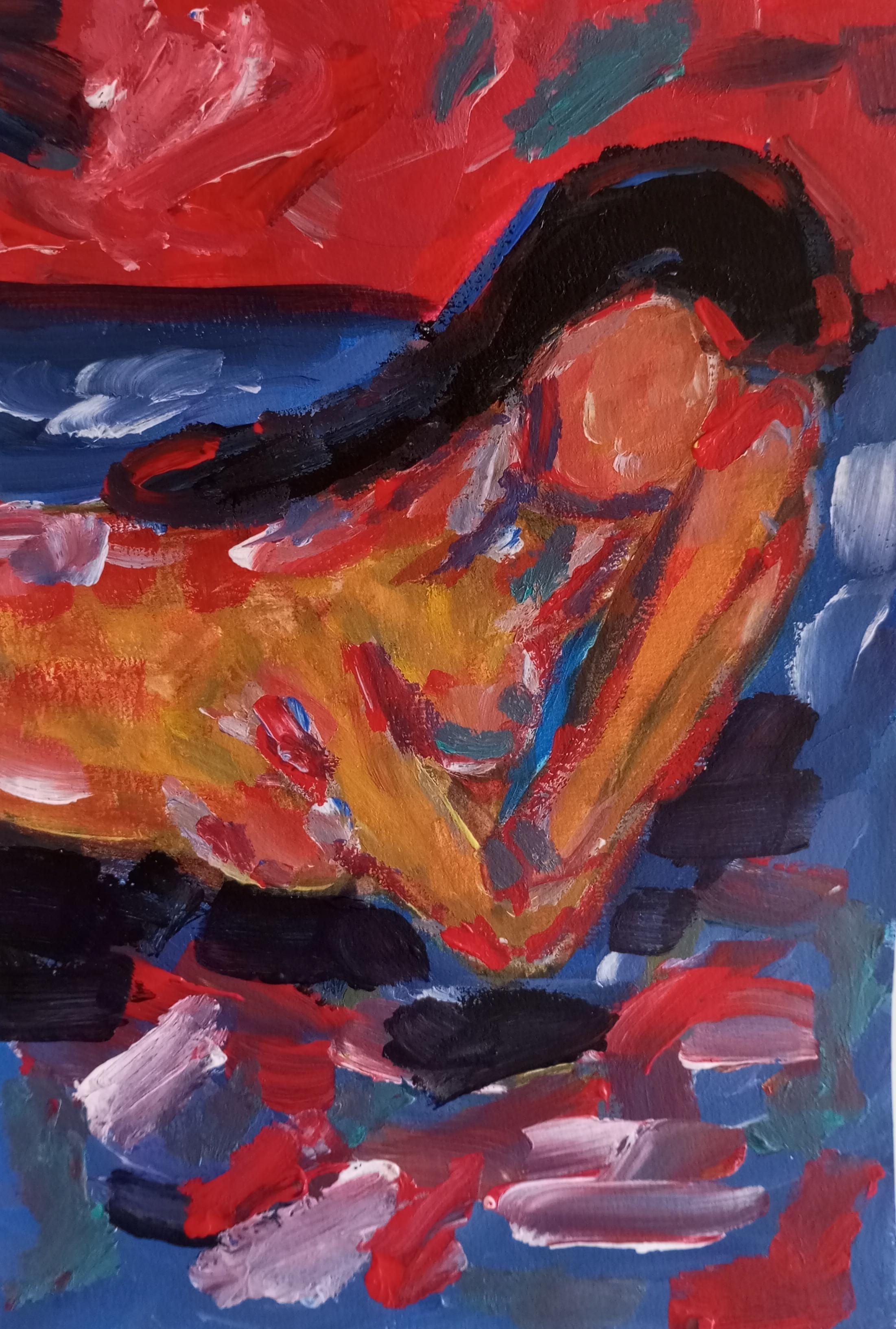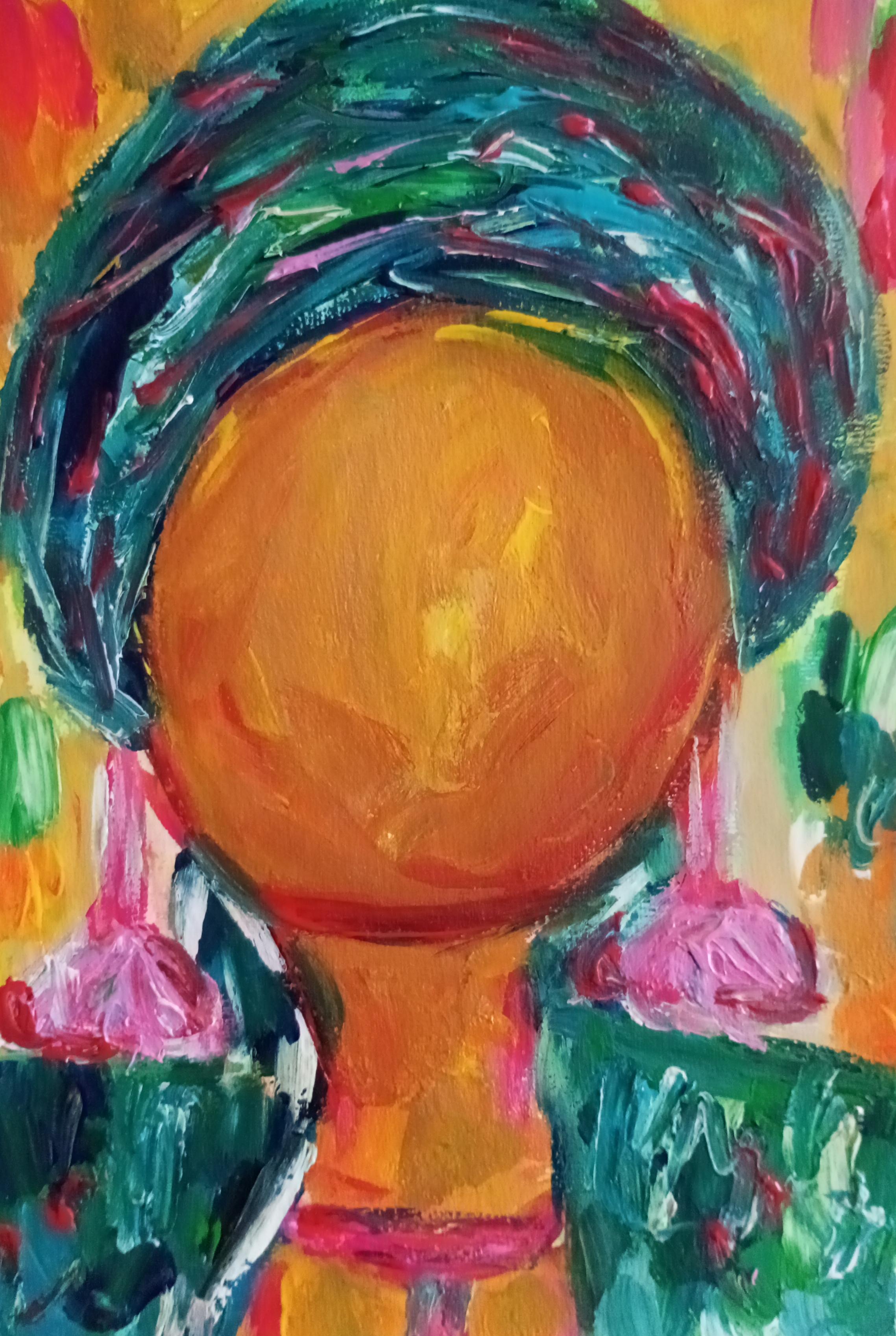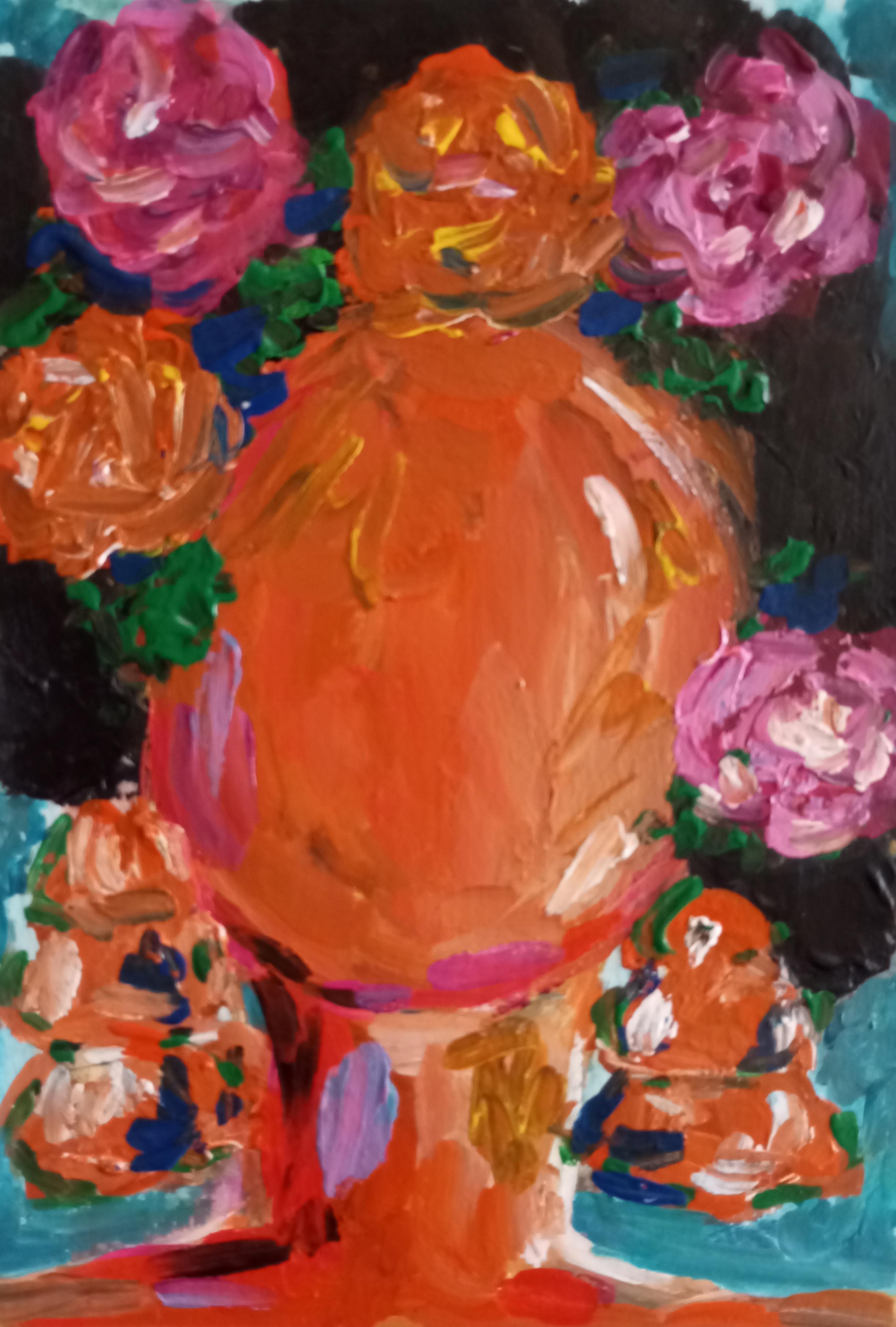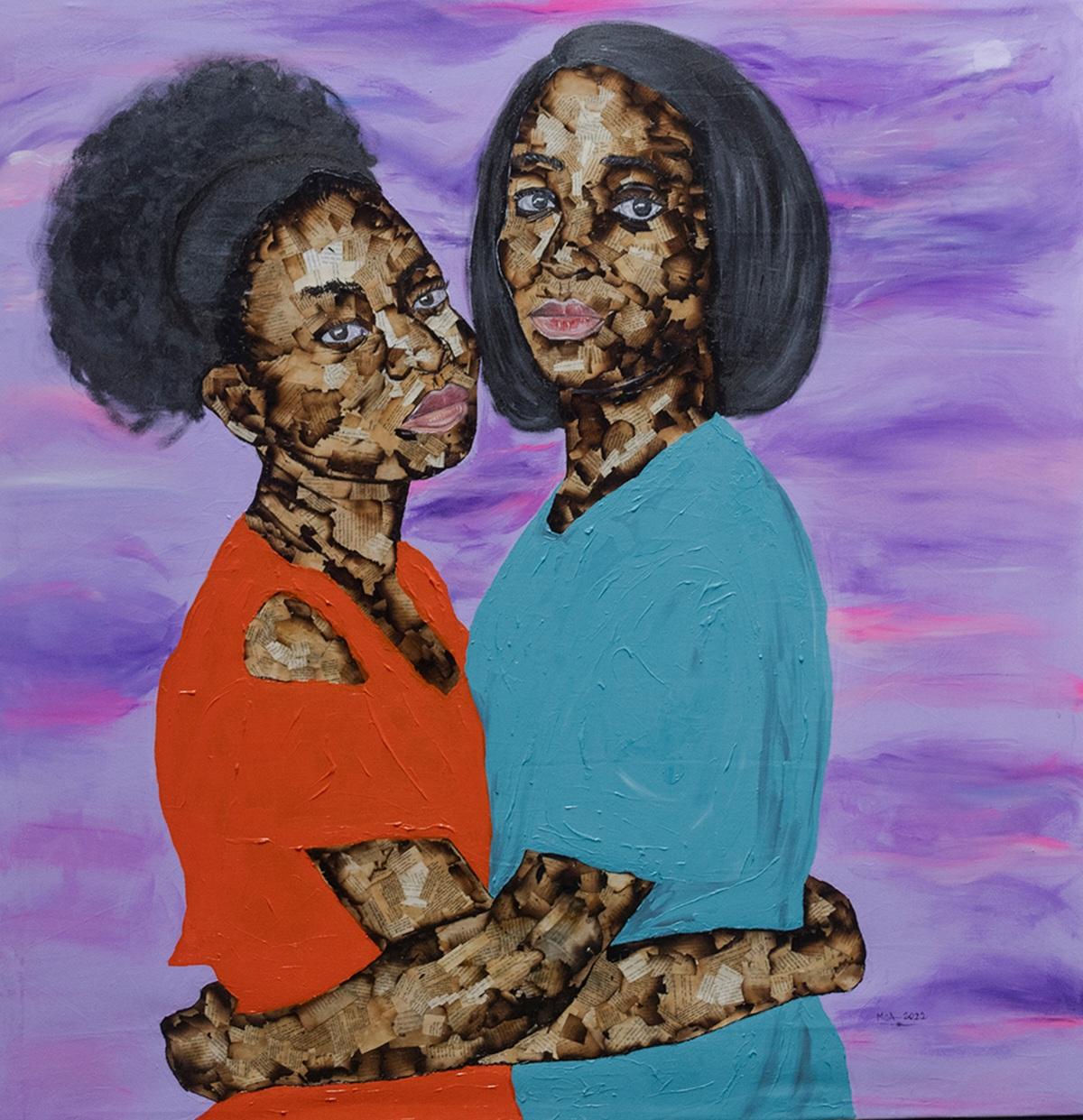Items Similar to "Portrait of senior military man in uniform" Tempera, original frame 1881
Want more images or videos?
Request additional images or videos from the seller
Unknown"Portrait of senior military man in uniform" Tempera, original frame 1881 1881
1881
About the Item
Interesting portrait of 1881, on the back there is a letter in French. Set historical relic
- Creation Year:1881
- Dimensions:Height: 8.67 in (22 cm)Width: 6.7 in (17 cm)
- Medium:
- Movement & Style:
- Period:
- Condition:
- Gallery Location:Torino, IT
- Reference Number:1stDibs: LU53738382582
About the Seller
4.9
Gold Seller
These expertly vetted sellers are highly rated and consistently exceed customer expectations.
Established in 1969
1stDibs seller since 2017
110 sales on 1stDibs
Typical response time: <1 hour
- ShippingRetrieving quote...Ships From: TORINO, Italy
- Return PolicyA return for this item may be initiated within 7 days of delivery.
Auctions on 1stDibs
Our timed auctions are an opportunity to bid on extraordinary design. We do not charge a Buyer's Premium and shipping is facilitated by 1stDibs and/or the seller. Plus, all auction purchases are covered by our comprehensive Buyer Protection. Learn More
More From This SellerView All
- "Sashenka" Oil cm. 40 x 50 1981 Woman, Russia, snowLocated in Torino, ITWoman, Russia, snow,Portraits Levitin, Anatoly Pavlovich or Levitine, Russian, 20th century, Born 1922, in Petrograd (now St Petersburg). Painter. Figures, nudes, genre scenes. Socialist Realism...Category
1980s Realist Portrait Paintings
MaterialsOil, Cardboard
- "Bimba in poltrona" olio su cartone cm. 35 x 25 1980 caBy Klara VlassovaLocated in Torino, ITChildhood, Little Girl, Green, Summer KLARA VLASOVA (Moscow, 1926) MUSEUMS St. Petersburg, State Russian Museum Moscow, Pushkin Museum Moscow, Museum of History and Reconstructi...Category
1980s Post-Impressionist Portrait Paintings
MaterialsOil, Cardboard
- "Bambina in giallo " Olio cm. 55 x 60 2007By Igor SMEKALOVLocated in Torino, ITFigura di bambina gialla Bellissima cornice in legnoCategory
Early 2000s Contemporary Portrait Paintings
MaterialsCanvas, Oil
- "Donna sul fiume" Olio su tavola cm. 50 x 67 1965By Leonid VAICHILIALocated in Torino, ITLEONID VAICHLIA (St. Petersburg, 1922) Works by Leonid Vaichlia can be found in various private collections in Europe, Japan, United States and in the following museums: Mosca, T...Category
1960s Impressionist Figurative Paintings
MaterialsOil
- Portrait with Flute - 21st Century, Contemporary, Oil, Portrait Painting, BlueBy Igor SMEKALOVLocated in Torino, ITMusic, Flute, child, blue, gray,russian art IGOR SMEKALOV 1965 He was born in Orenburg, where he lives and works. 1984 He graduated in Art. 1990-1995 He regularly met in Pas...Category
Early 2000s Contemporary Figurative Paintings
MaterialsOil
- "Little girl" Oil cm. 20 x 28 , Child, Winter, Russian, ImpressionismBy Yakov KozlovLocated in Torino, ITChild,Little girl,Russian painter ,Baby, Russian baby YAKOV KOZLOV (1918 - 2015) MUSEUMS Riga, Museum of Latvian and Russian Art Riga, Janis Rainis National Literary Museum Pereslavl-Zalessky, Museum of Art and History Mosca, Ministry of Culture of the Russian FederationCategory
1960s Post-Impressionist Figurative Paintings
MaterialsOil
You May Also Like
- Portrait Young Lady w Tiny Dog 19th Century Watercolor from Wallace CollectionLocated in Stockholm, SEFrançois Theodore Rochard (1798 – 1858) “The Pet Dog”, french, watercolourist, painter, draftsman, miniature painter. Born in Paris, exhibiting at the RA from 1820, brother of the po...Category
Early 19th Century French School Animal Paintings
MaterialsWood, Paper, Watercolor
- Portrait of Alexandre Blanchard from AmiensBy Alfred DehodencqLocated in BELEYMAS, FRAlfred DEHODENCQ (Paris 1822 - Paris 1882) Portrait of Alexandre Blanchard, teacher at the Amiens high school (1851-?) Pastel on paper mounted on canvas H. 50 cm; L. 44 cm Signed and...Category
1880s French School Figurative Paintings
MaterialsCanvas, Pastel, Laid Paper
- Portrait of Roger Goldet (Goldschmidt) childBy Jules-Abel FaivreLocated in BELEYMAS, FRAbel FAIVRE (Lyon, 1867 – Nice, 1945 Portrait of Roger Goldet (1911-1997) at age 4 Pastel H. 59.5 cm; L. 43 cm Signed at the top right and dated 1914 Provenance: The model's family ...Category
1910s French School Figurative Paintings
MaterialsCanvas, Pastel, Laid Paper
- Louis Adolphe Tessier (1858-1915) Women portrait under vinesBy Louis Adolphe TessierLocated in BELEYMAS, FRLouis Adolphe TESSIER (Angers 1858 – Angers 1915) Portrait de femme sous une treille et au panier de pêches Pastel H. 115 cm ; L. 75 cm Signé en bas à droite et daté 1890 Peintre a...Category
1890s French School Figurative Paintings
MaterialsPaper, Pastel
- Antique Portrait of 6 Dogs on Porcelain by Maison Pichenot-Loebnitz ca. 1870sLocated in SANTA FE, NMAntique and exceptionally rare and fine Portrait of 6 Dogs on Enameled Ceramic Maison Pichenot-Loebnitz France, ca. 1870. 25 x 8 (31 x 13 framed) inches This rectangular panel made of enameled ceramic was made by Jules Loebnitz in the second half of the 19th century depicts a suite of 6 very fine canines in a landscape setting. The Pichenot-Loebnitz factory was founded by Mr Pichenot, grandfather of Jules Loebnitz, in 1833. From 1841, Mr Pichenot created a new, innovative method of uncrackable earthenware panels for architectural mantels, winning a medal at the Exhibition of 1844. In 1857, Jules Loebnitz, an artist as much as an industrialist, became director of the factory. For his first major job, Loebnitz passionately collaborated with architect Félix Duban on the restoration of the Blois Castle, recreating the antique tiles of the mantelpieces. He then went to work with the most prominent architects of his times; Eugène Viollet-le-Duc, Laval, Charles Garnier, Just Lisch and Paul Sédille. A friendship was born in 1867 between Paul Sédille, the architect of the Printemps department stores and the Basilica of Bois-Chenu in Domrémy-la-Pucelle, and Jules Loebnitz that would lead to a tight, long-lasting professional, artistic, and intellectual collaboration. This was an important meeting between the theorist of polychrome architecture and the man who had pushed French ceramic art considerably forward, allowing for large, enameled earthenware plates decorated with very bright and long-lasting glass-like colors. Many architectural projects were born from the collaboration of Sédille and Loebnitz: World’s fair pavilions, apartment buildings, villas, hotels, and monuments. During the Great Exhibition of 1878, Paul Sédille created the door of the Palais des Beaux-arts, while Jules Loebnitz was in charge of the ceramic decoration of the facade. A reporter covering the 1878 World’s fair described the monumental door...Category
1870s French School Animal Paintings
MaterialsEnamel
- Model undressingLocated in BELEYMAS, FRJulius EXNER (Copenhagen, 1825 - Copenhagen, 1910) Model stripping Oil on canvas H. 122 cm; L. 74 cm Signed and dated 1842 lower right Exhibition: most likely Charlottenborg Salon of 1845, under number 110, titled Modelfigur, awarded with a silver medal Provenance: Emilio Fernando Bolt (c.1860 - 1944), acquired from the artist around 1900, then by descent Our painting was produced as part of the summer sessions organized between 1839 and 1850 by Christoffer Wilhelm Eckersberg (1783-1853), the master of Danish painting of the first half of the 19th century, in his private studio-apartment on the ground floor. floor at the Royal Academy of Fine Arts in Copenhagen. The master brought together a few students there between June and September, rented one or two models for the season, which were painted from different angles, the artists (including Eckersberg himself) sitting side by side. Eckersberg used to paint a fairly small version, the pupils of the larger formats. The work fits more generally into the legendary context of the research and reforms carried out by Eckersberg concerning the studies of nudes and in particular of female nudes, to make this exercise a genre of painting in its own right. Following his two-year stint in Jacques-Louis David's studio in Paris in 1811, Eckersberg had been made aware of work on the nude and in particular on live models, in natural light, while in Denmark the drawings were then only made from casts of antique models or other mannequins. In 1822, when he had been a professor there since 1818, it was he who had the Royal Academy of Copenhagen authorize the study of nudes, no longer in the evening by candlelight, but in natural light; from 1833, it was still he who allowed students to work on nude female models, even if the official authorization of the Academy did not take place until 1839. It was this same year that he instituted his summer sessions, on a private basis, to orient his painting and that of his students towards a new conception of the representation of models: even if the nude remains the real theme, it does not however, this is more than just an academic exercise. The subject is placed in a contemporary interior, with a rather sophisticated decor, and occupied with an intimate activity (it is this type of intimate vein that we will find later in Degas or Cassatt for example); thus in our painting, the young woman is supposed to take off her clothes to wash. The objective is that the viewer forgets that the master and his students are painting a model during a posing session, and that he instead has the impression of being alone with the model, but invisible, almost like a voyeur in spite of himself. Moreover, in these paintings, the model never looks towards the spectator, inducing a psychological distance with him, whereas model and artist are actually physically very close. On the other hand, it is not a question of idealized nudes either, even if Eckersberg, proof of his debt to the antique, chooses fairly classic models and poses. The sensuality is real and very present, with dreamy, even innocent, and timeless expressions (the models do not seem to have a defined age), suave and slow attitudes and movements, and especially with clothes that hide or reveal skillfully parts of the female body: upper buttocks, pronounced hips... Made by an artist under 20, our sensual painting is probably one of the most beautiful and spectacular produced by the students of Eckersberg during these summer sessions. With a perfect balance between the firmness of an ancient statue (it recalls the Venus de Milo) and the softness of the feminine forms, highlighted by a harmonious palette, it captures the attention with many details: the almost photographic folds white clothing...Category
1840s French School Nude Paintings
MaterialsCanvas, Oil




